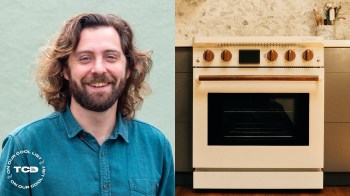Scientists at Washington State University have repurposed shipping containers into test spaces for researching different air conditioning methods.
The need for cooling systems is growing, and these 60 square-foot chambers can be heated to 125 to 130 degrees Fahrenheit to simulate extreme heat conditions — allowing researchers to continue innovating cooling methods year-round. The containers utilize renewable energy such as wind and solar power to heat up, and the smaller space makes it easier to simulate experiments.
"With smaller scale models, we can also do much quicker tests and get results sooner than having to wait on large-scale prototype construction," lead author Omar Al-Hassawi explained in ScienceDaily.
These chambers will be used to continue innovating passive cooling systems — systems that utilize building design to aid in cooling the space. They often include good insulation, shade, and ventilation to ensure any cool air is circulating through the building. This is to supplement a push toward renewable energy for air conditioning and other building elements like lighting to take some of the pressure off air conditioning systems.
Passive cooling systems are centuries-old systems that are still in practice today — for example, placing windows on opposite ends of the room to facilitate a cross breeze — and they can be added to old buildings or built into new ones. Widespread adoption of cooling systems like this could significantly lower energy demand.
"That's why research like this would really help," Al-Hassawi told ScienceDaily. "How can we address building design, revive some of these more ancient strategies, and include them in contemporary building construction? The test chamber becomes a platform to do this."
Rising global temperatures have created a need for more ways to stay cool — and researchers believe this demand will continue to increase. Air conditioning runs on electricity, so as the need goes up, so will the cost. Research into these passive cooling systems will help to buffer the increasing costs of air conditioning, and they'll help the environment, too.
According to ScienceDaily, 12% of the energy in the world is used to cool buildings. This energy often comes from burning nonrenewable resources such as coal and oil that releases planet-warming gases into the air and contributes to air pollution.
These exciting advancements will allow researchers to work faster in finding cost-effective, convenient, and eco-friendly cooling solutions.
Join our free newsletter for weekly updates on the coolest innovations improving our lives and saving our planet.









